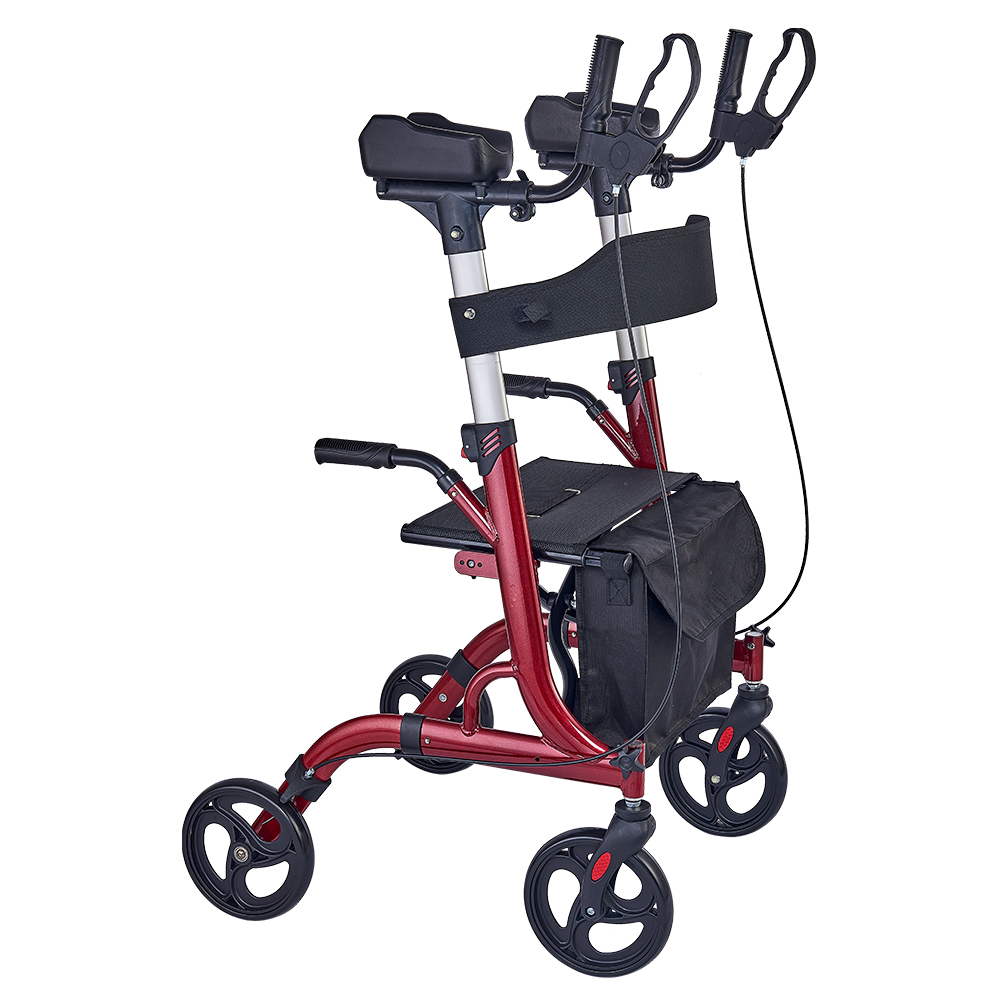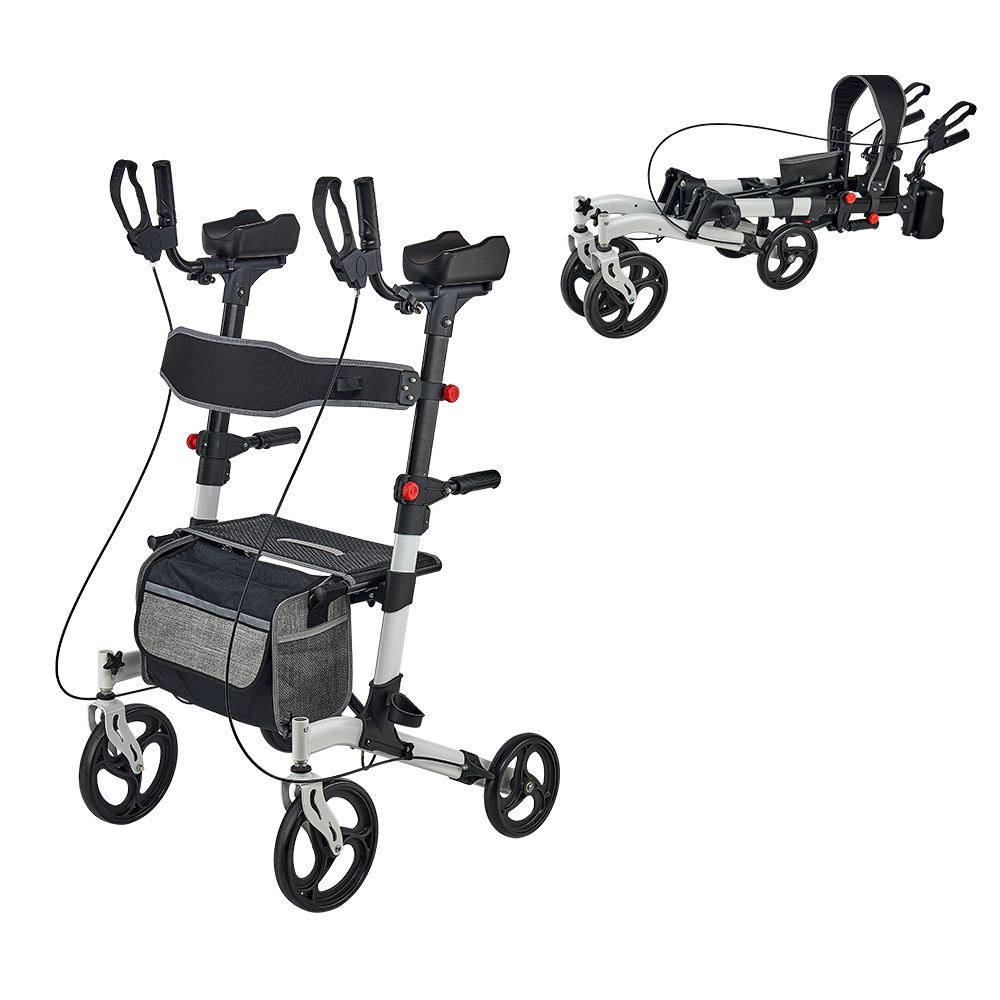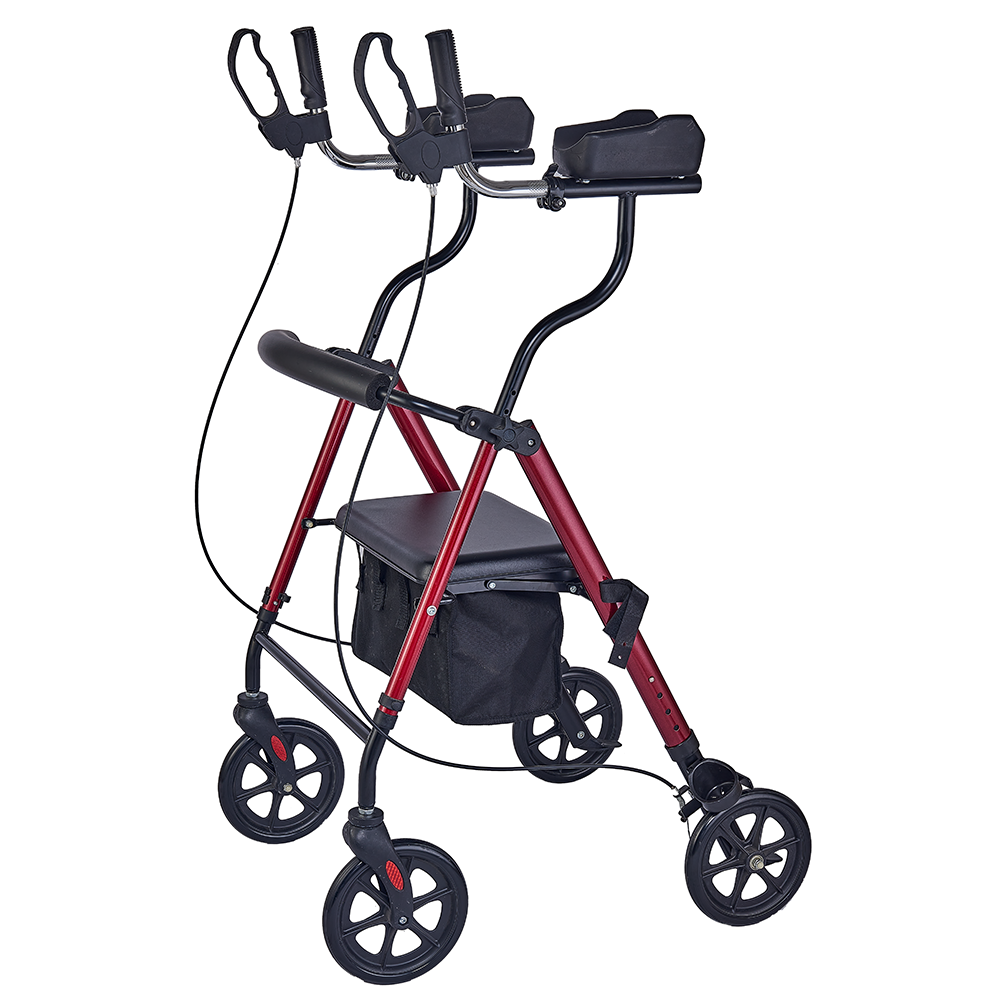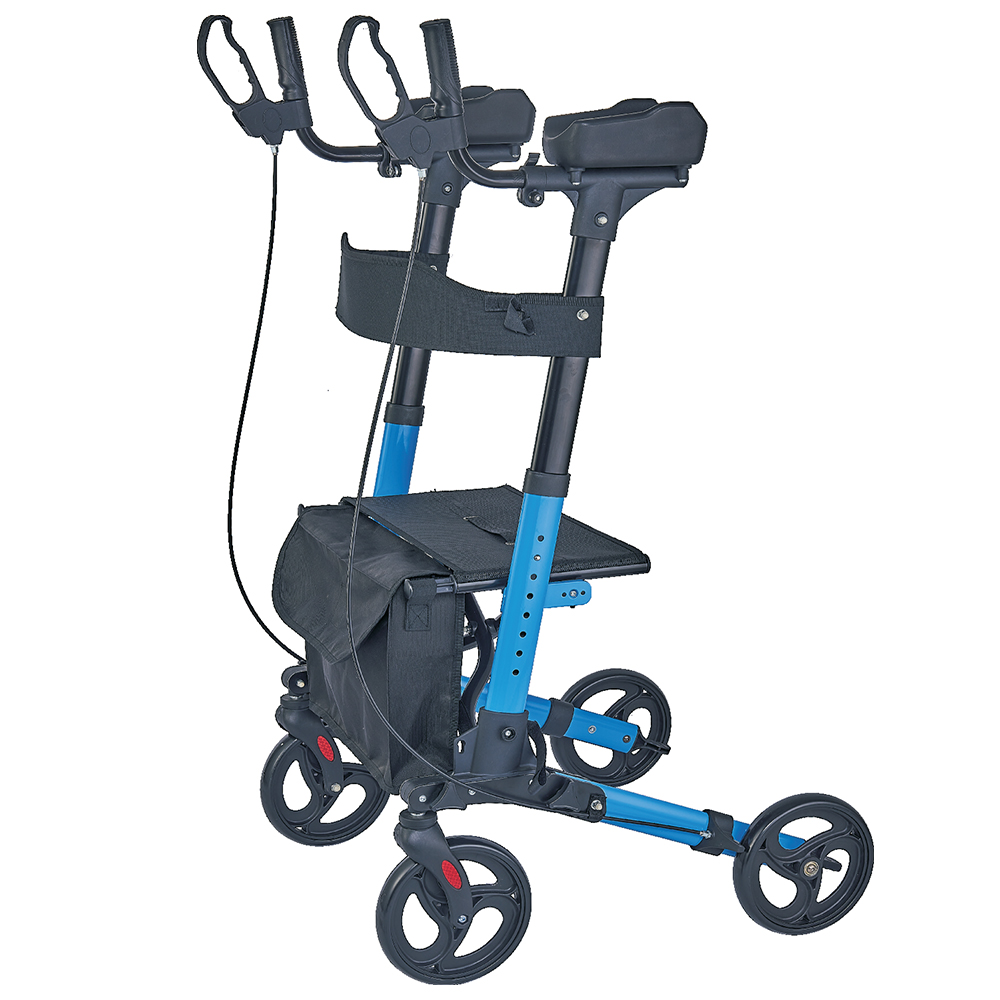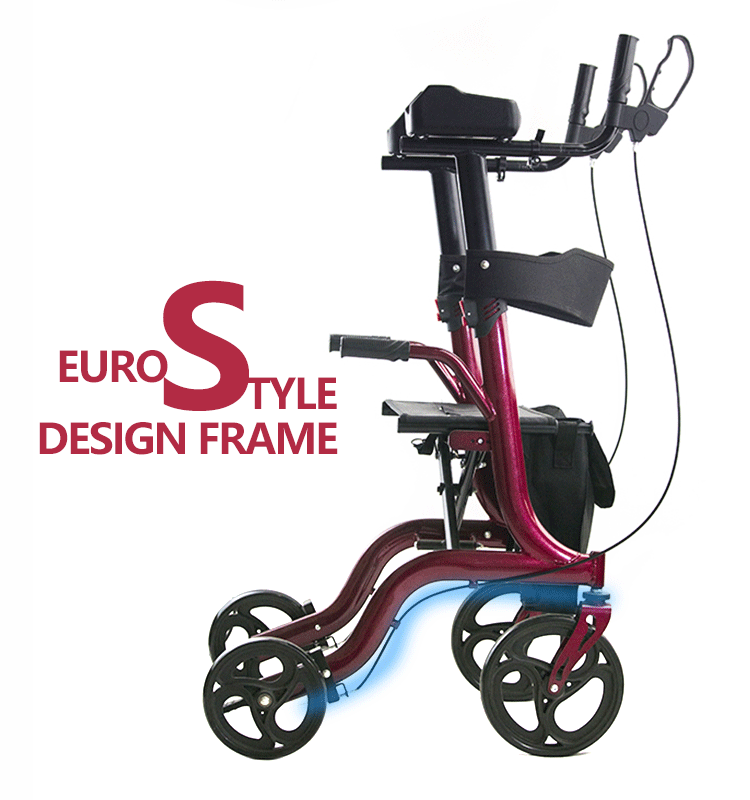Latest News How to choose a suitable rollator?
Release time:2017-09-18
What size suits?
With walker wheels, the general rule is the larger the wheel, the easier it is to push, especially over rough ground. Walkers with small solid wheels are really only suitable for indoors.
Three wheels or four?
Walkers with three wheels are more maneuverable but less stable than those with four wheels.
Four wheel walkers are easy to push, especially if the wheels are large and swivel. This is a real advantage.
If you need to lean or push against the rollator's frame for support, you may find a standard walker too mobile - the frame may "run away" from you. The solution may be a wheeled walker with slow-down brakes, where with the turn of a knob you can adjust to have tension on the wheels.
Rollator frame
Steel or aluminum?
Steel is stronger, but aluminum is lighter. If you weigh more than 250 pounds, you will likely want a steel walker. Otherwise, you can go with one of the lighter (and more easily pushed) aluminum rollators.
Rollator handle height
How high should it go?
The handle height on rollators adjusts, either at the base or with individual handle adjustments. The minimum height setting may be as low as 30" (on a petite model), the maximum can go as high as 38." The exact range varies with the walker. One rollator model might have a 31" minimum and a 35" maximum. Another might run from 33" to 36." Yet another, from 34" to 38."
Select a rollator whose handles can be adjusted to a comfortable height for you. Taller folk will need higher ranges (say between 34" and 38"), shorter folk will need lower ranges (perhaps 30" to 33"), with others falling somewhere in between. Ranges overlap, and you don't have to fit into the middle of a range, so long as it includes your preferred handle height.
Rollator brakes
What's to stop you?
With a rollator you want brakes that are easy and quick to operate so you feel in control. Traditional choices include push-down and loop. In addition, an innovative reverse braking system aids those who have trouble walking with a "natural" gait.
Push-down
Push down brakes are operated by downward pressure on the spring-loaded frame. These are the easiest brakes to operate. When you lean on the rollator frame, the motion of the rear wheels is interrupted. This halts forward movement while you shift weight from one foot to the other.
Push down brakes may be unsuitable for either petite users who can not push down heavily enough on frame or heavy users who may engage the brakes too constantly.
Loop
Cable loop brakes resemble bike brakes. They require squeeze action and simultaneous use of both hands. However, they provide greater stability than pressure brakes.
Because they offer instant braking action, cable brakes must be used cautiously.
Special brake features
A locking feature frees you from having to continuously maintain a grip. Instead the rollator's brakes can be locked in the "on" position. This is a "must have" for being able to safely use a wheeled walker's built-in seat.
Slow-down brakes allow you to control the rollator's speed on an incline. Afraid your walker might run away from you on a hillside? Slow-down brakes let you set the brake tension, so the wheels roll in a controlled fashion.
Single-hand brakes let one hand do all the braking, so if you have a strong side, it can take over for the weak side.
Rollator Options
Rollators come outfitted in various ways. Some features are standard, others optional. The most popular items include:
seat
shopping basket or bag
walking stick holder
Seat
If you tire easily, you will want a seat on your walker so you can rest when fatigued. Some rollators even include a small backrest and armrests that assist with sitting down or standing up.
Shopping basket/bag
It's nice to be able to carry items easily from place to place while using a rollator. Baskets and bags of various sizes and position are available for this purpose. Open wire baskets are a snap to load and unload, but under-seat tote bags provide privacy for things like purses.
Baskets positioned low on the rollator frame may be difficult to reach.
Walking stick holder
There are places where rollators don't function very well - such as extremely tight spaces. A holder enables you to have a cane or walking stick on hand for those times when using the walker itself proves inconvenient.
Rollator comparison
It is easy to be overwhelmed by the variety of features and options available on rollators. Recommendation: decide upon your must have features - no more than a two or three. Then restrict your search to rollators offering those options. By comparing these models to one another in terms of nice to have features, you will probably quickly develop a preference.
Once you have limited your search, you can contact us!


